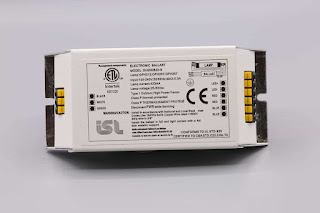Understanding the Basics of Motor Control Systems for Brushed DC Motors
Brushed DC motors are widely used in various applications, ranging from household appliances to industrial machinery. These motors offer simplicity, cost-effectiveness, and reliable performance. Let’s discuss the key components and principles behind these systems.
Power Supply
The motor control system starts with a power supply that provides the necessary voltage and current to drive the motor. Selecting an appropriate power supply that matches the motor's voltage and current requirements is important.
Motor Driver
The motor driver is responsible for controlling the speed and direction of the motor. It acts as an interface between the microcontroller or control system and the motor itself. The motor driver receives signals from the control system and adjusts the voltage and current supplied to the motor accordingly.
Microcontroller/Control System
The microcontroller or control system is the brain of the motor control system. It sends signals to the motor driver, instructing it to change the motor's speed and direction.
The control system can be programmed to implement various control techniques such as PID control or PWM control.
Speed Control
Speed control is one of the essential functions of a motor control system. It allows the motor to run at different speeds based on the application requirements.
The control system can regulate its rotational speed by adjusting the voltage applied to the motor. This is particularly useful in applications where precise speed control is needed, such as robotics or conveyor systems.
Related Links:
- https://thehealthvinegar.com/page/business-services/key-features-to-look-for-when-selecting-electronic-ballasts-for-uv-germicidal-lamps
- https://1look4.com/story/business/key-features-to-look-for-when-selecting-electronic-ballasts-for-uv-germicidal-lamps
- https://idyee.com/key-features-to-look-for-when-selecting-electronic-ballasts-for-uv-germicidal-lamps/
- https://xucal.com/key-features-to-look-for-when-selecting-electronic-ballasts-for-uv-germicidal-lamps/
- https://flip.it/hyp_qc
- https://wakelet.com/wake/2k85qwIOxWutFwljfHrZV
- https://expressafrica.et/index.php?link1=post&id=254314_key-features-to-look-for-when-selecting-electronic-ballasts-for-uv-germicidal-la.html
- https://kaancy.com/key-features-to-look-for-when-selecting-electronic-ballasts-for-uv-germicidal-lamps/
- https://australian-school-holidays.mn.co/posts/52584376
- https://justpep.com/story/business/key-features-to-look-for-when-selecting-electronic-ballasts-for-uv-germicidal-lamps
- https://rentry.co/4ad8g7f5
- https://genuinepath.com/key-features-to-look-for-when-selecting-electronic-ballasts-for-uv-germicidal-lamps/
- https://www.anibookmark.com/site/key-features-to-look-for-when-selecting-electronic-ballasts-for-uv-germicidal-lamps-ab1454632.html
- https://printable-calendar.mn.co/posts/52727617
- https://www.metroflog.co/post/661060
Direction Control
Direction control enables the motor to rotate in both clockwise and counterclockwise directions. It is achieved by reversing the polarity of the voltage applied to the motor. The control system can easily change the motor's direction by altering the signals sent to the motor driver.
Current Sensing
To protect the motor from overheating or overloading, many motor control systems incorporate current sensing. By monitoring the motor's current, the control system can detect abnormal conditions and take appropriate actions, such as reducing the motor's speed or shutting it down.
This feature adds an extra layer of safety and prevents damage to both the motor and the surrounding equipment.
Encoder Feedback
Some advanced motor control systems utilize encoder feedback to achieve precise control over the motor's position. An encoder provides information about the motor's rotational position and speed back to the control system.
By familiarizing yourself with the key components and principles of these systems, you can make informed decisions when selecting and implementing motor control solutions.
With years of experience and expertise, ISL Products manufactures high-quality brushed DC motors that are reliable, efficient, and customizable to meet specific requirements. ISL Products is also a trusted manufacturer of reliable electronic ballasts for UV-C germicidal lamps. Contact ISL Products to make an order.
.jpg)


Comments
Post a Comment